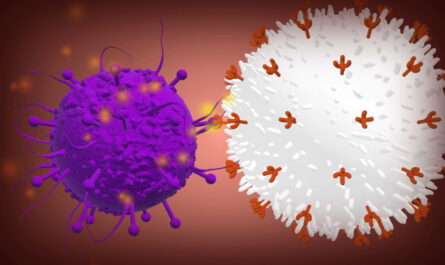
Gallbladder cancer is a type of cancer that forms in the gallbladder, a small organ that sits just under the liver. The gallbladder’s job is to store and concentrate bile produced by the liver, which helps digest fats from our food. Gallbladder cancer is rare but can be life-threatening if not diagnosed and treated early. In this article, we will discuss various aspects of gallbladder cancer including causes, risk factors, symptoms, diagnosis and treatment options.
Causes and Risk Factors
While the exact cause of gallbladder cancer is unknown, certain risk factors are linked to higher chances of developing this type of cancer. These risk factors include:
Age: Gallbladder cancer is more common in adults aged 60 years or older.
Gender: Women are more likely to develop gallbladder cancer than men.
Gallstones: Having gallstones, especially gallstones that have been present for many years, significantly increases the risk. Gallstones form when bile contains too much cholesterol or bilirubin.
Chronic inflammation: Conditions that cause long-term inflammation inside the gallbladder like gallstones put one at higher risk.
Being overweight or obese: Excess weight increases risk by promoting gallstone formation and inflammation.
Smoking: Smoking cigarettes may be linked to greater chances of gallbladder cancer.
Family history: People with a family history of gallbladder cancer or a close relative with the disease are at increased risk. Genetic factors may play a role in some cases.
Birth defects: conditions like choledochal cyst which involves defects of bile ducts are associated with higher chances.
Parity: Women who have given birth to 3 or more children are at higher risk than those with fewer childbirths.
Symptoms
Early stage gallbladder cancers usually do not cause noticeable signs or symptoms. By the later stages, signs may include:
– Pain in the upper or middle abdomen or near the shoulder blades
– Weight loss without trying
– Fever
– Nausea or vomiting
– Loss of appetite and feeling full quickly when eating
– Yellowing of skin and whites of eyes (jaundice)
The symptoms are often vague and can mimic other abdominal disorders making diagnosis difficult at initial stages. Anyone experiencing persistent unexplained abdominal symptoms should consult a doctor.
Diagnosis
If symptoms suggest gallbladder cancer, the doctor performs further tests:
– Blood tests: To check liver function and other health markers
– Abdominal ultrasound: Used to examine the gallbladder and surrounding organs for masses or blockages.
– CT or MRI scan: Provide detailed images of internal organs and presence of tumors.
– Chest x-ray: To check if cancer has spread to lungs.
– Endoscopic Retrograde Cholangiopancreatography (ERCP): A special x-ray exam to view bile ducts and insert stents.
– Laparoscopy: A minor surgical procedure using small incisions to directly visualize and get tissue samples.
– Biopsy: Examining cells or tissue under microscope to confirm presence of cancer.
Staging helps determine how far the cancer has progressed by its size, if it has spread beyond gallbladder and involved lymph nodes or other organs. This crucial for deciding treatment options.
Treatment and Prognosis
Treatment depends on the staging and overall health of the individual. Main approaches are:
Surgery: Removal of gallbladder (cholecystectomy) is curative for early stage cancers confined to the organ. Patients with involvement of local lymph nodes or nearby tissues may require additional liver resection.
Chemotherapy: Anti-cancer drugs administered through IV or orally are often given to shrink large tumors prior to surgery or as post-operative adjuvant treatment to prevent recurrence.
Radiation therapy: High-energy radiation is used to shrink tumors or as palliative care. May be given along with chemo.
Targeted drug therapy: Drugs that interfere with specific molecules involved in cancer growth are showing promise.
Prognosis depends on extent of disease – most curable if detected early before spread. Even after complete removal, there is 30-40% chance of recurrence. 5-year survival rate with stage 1 cancer is around 70% but drops to 10% for stage 4. Regular follow ups are important to watch for signs of returning disease.
Prevention
While risk factors like age cannot be controlled, maintaining a healthy weight, not smoking, treating chronic gallbladder conditions and yearly screening of high-risk groups may help reduce odds. Leading a balanced lifestyle and staying physically active also promotes overall well-being.
Conclusion
In summary, gallbladder cancer is a rare but serious type of cancer with risk increasing with age, family history, obesity, gallstones and other factors. Early detection when treatment has most impact can be aided by understanding common signs. Surgery remains the mainstay but often involves multidisciplinary care. Lowering modifiable risk factors and screenings may play a role in prevention. With continued advancements, prognosis is looking more optimistic.


